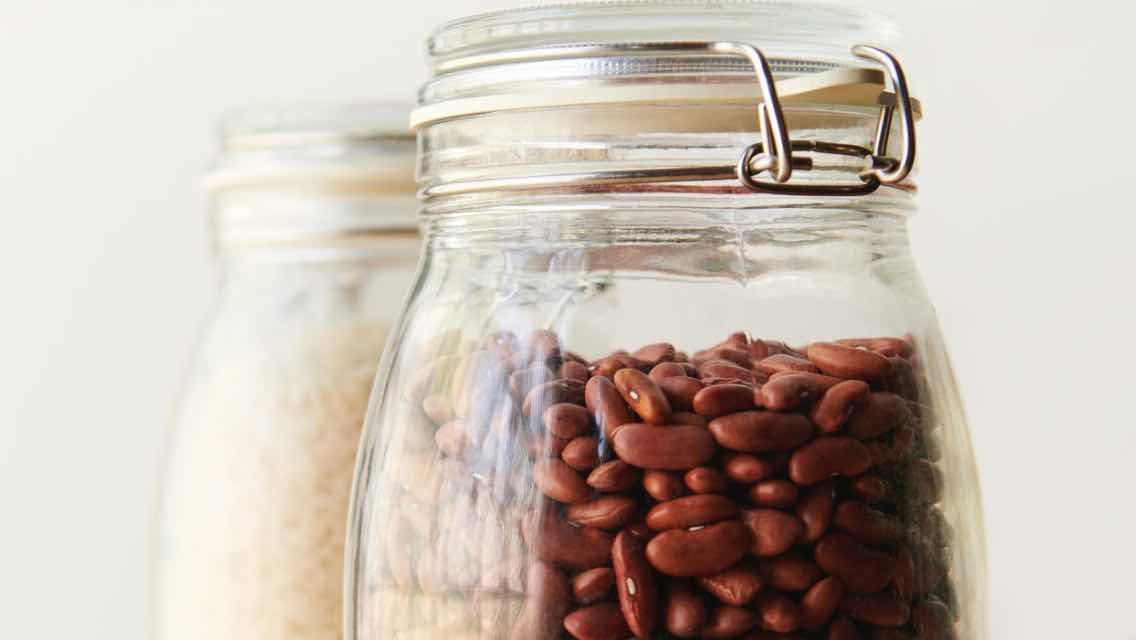1) What are the best whole-food sources of fiber?
When nutritionist Kathie Swift, MS, RDN, asks her students at Kripalu Center for Yoga and Health to list good sources of fiber, most say “bran!” She’s on a mission to change that.
“By the end of class, I want them all to say, ‘vegetables, fruits, legumes, nuts and seeds, and whole grains like quinoa and steel-cut oats.’”
Recognizing a wide array of fiber-containing foods is important for a couple of reasons. One, it highlights the importance of eating diverse sources of fiber. Two, it can help anyone who has food restrictions or who follows low-carb diets get more of it.
“In traditional ketogenic diets, it’s easy to avoid vegetables for fear of going over your carb count for the day,” says functional-medicine practitioner Will Cole, DC, IFMCP, author of Ketotarian. “But there are actually a wide variety of low-carb, nonstarchy vegetable options that are rich in fiber and other nutrients essential for optimal health. These include artichokes, Brussels sprouts, and Swiss chard. Avocados, nuts, and seeds are great sources of fiber and healthy fats.”
Soluble-Fiber Sources:
Soluble fiber is the sticky web that catches waste products. Here are some great whole-food sources.
Legumes: These may be nature’s richest source: 1 cup of beans contains about 5 to 8 grams of soluble fiber. Hurd recommends adults get at least 5 grams of soluble fiber every day.
Vegetables: One avocado, 1 cup of Brussels sprouts, and 1 cup of sweet potatoes each contain roughly 4 grams of soluble fiber. (Here are “4 Easy and Effective Strategies to Eat More Veggies.”)
Fruits: Some health-conscious eaters eschew fruit because of concerns over blood sugar, but experts counter that its fiber helps regulate any spikes. “The idea that fruit is bad for you is ridiculous,” says Swift. Dried figs have just under 8 grams of fiber in a cup. One medium-size orange has around 1.8 grams, and one medium-size pear with the skin on has between 1 and 1.5 grams. (Experts argue that fruit is essential to a well-balanced diet. Learn more at “Why Eating Fruit Is Still Good for You.”)
2) Does eating different kinds of fiber matter?
Microbial diversity is a hallmark of a healthy gut microbiome, and one of the biggest factors is consuming fiber from diverse sources.
“Diversity of fiber is the most important determinant of what will grow in the gut,” says Sarah Ballantyne, PhD. “Think of the gut microbiome like a bustling city — a city that works because people have different jobs. Some are teachers, some are doctors, some are trash collectors.”
Each of these microbes prefers a specific kind of fiber, and you can’t afford to starve any one class of worker. The greater variety of types of fiber in your gut, the better fed the workers in your bustling city will be.
“You need all those jobs to be filled,” Ballantyne adds, “so you don’t have class sizes that are too big for one teacher, or trash piling up in the alleyway, or too long a wait for the doctor.”
3. Are there times when I will want to moderate fiber consumption?
Fiber is food for gut bugs. This is great news if the good and bad bacteria in the gut are in balance. But if the bad outnumber the good — a condition called gut dysbiosis, which can cause gas, bloating, pain, and reflux — temporarily cutting out fiber can help starve them out, curtail symptoms, and reset the gut’s microbial ecosystem.
The key word here is “temporarily.” Most low-fiber protocols are short-term therapeutic approaches overseen by a healthcare practitioner. If you suffer from dysbiosis and want to try a low-fiber protocol, like the low-FODMAP or keto diet, work with a professional to get started. (For more on FODMAPs and ketogenics, see “Can An Elimination or Low-FODMAP Diet Treat IBS?” and “What You Need to Know About the Keto Diet”, respectively.)
Likewise, anyone with an inflammatory intestinal disease will want to avoid a lot of fiber during a flare-up, advises Swift, “just to get the gut to calm down.” This includes conditions such as ulcerative colitis or diverticulitis (when small pouches that form in the intestines become inflamed or infected). But that avoidance, too, is best considered temporary; once the flare-up eases, consuming adequate dietary fiber may help prevent another episode.
4. What if I just take fiber supplements instead?
Supplements won’t hurt you, but their benefits are limited because they usually contain only one source of fiber — such as psyllium or guar gum. And though supplements often deliver about the same amount of fiber as a serving of high-fiber food, whole foods are generally preferable because they contain diverse forms of fiber, as well as health-promoting phytonutrients and other healing compounds.
“My favorite fiber supplement is food, because you get a variety of soluble and insoluble fibers — and these insoluble fibers, or prebiotics, are food for the gut,” says nutritionist Liz Lipski, PhD, who adds that supplements are helpful when traveling and you’re unable to cook. Just don’t make them your main source.
5. How do I know if I’m getting enough fiber?
The real test is in how often you poop — or don’t. “We should be having one to three bowel movements every day,” says Lipski. “So many people are having bowel movements every other day, and that’s not enough.”
Another measure of fiber intake is ease of elimination. “When you get enough fiber, you will have bowel movements that look like brown bananas and they just flow out of you,” adds Lipski. “If you like to read while you have a bowel movement, you will be disappointed when you eat enough fiber and are well hydrated, because you don’t need much time in the bathroom.”
This originally appeared in “Why You Need to Eat Fiber” in the September 2020 print issue of Experience Life.





This Post Has 0 Comments